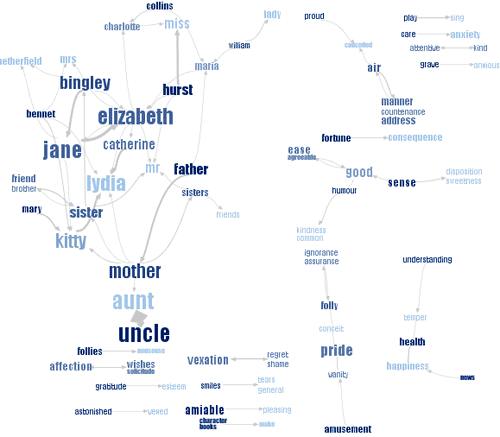For the Seoul Digital Forum 2012 which will occur in May 2012, I was asked some questions about the topics of the conference. The questions and my answers are below.
1. What does ‘coexistence’ mean to you in this digital era?
Recently the world has rapidly accelerated in communication speed, traffic, and devices and we have now arrived into a hyperconnected world. We now have immediate and fully accessible communication between people, between cultures and races, between humans and machines, and between machines and machines. This hyperconnectivity will bring about radical
developments in every aspect of human lives in the form of new kinds of symbioses between humans and computers, new ways of communication between people, and new forms of social organization and interaction. Thus hyperconnectivity has brought about a global coexistence between people and people, between people and machines, and between machines and machines.
2. Which technology do you think has made the biggest contribution to our ‘humanness’ (based on your understanding/conceptualisation of humanness)?
Hyperconnectivity has made a revolution in humanness by breaking down the boundaries of both time and space. Humans, animals, the environment, and gadgets are brought together anywhere and at anytime. The impact on society is enormous and we are only beginning to see the resulting massive changes in humanity. Hyperconnectivity has increasing led to less importance to physical place, such as developed or developing world, or urban or rural distinctions.
3. What do you think is the missing piece that will complete the technology puzzle? What kind of technology will be most needed in our future?
Currently it is difficult to reproduce a true sense of presence through the internet. In traditional human communications, body gestures, the physical environment, and touch can often more deeply explain the intended mind and provide intrinsic information, which makes for a more rich communication exchange. Furthermore, we often communicate emotionally using all the senses simultaneously, including sight, touch, sound, but also through taste and smell, such as sharing a meal together or cooking for a partner. We thus need to create fundamentally new forms of media to connect humans in the physical world and through the virtual world, not just in the transmission of information and verbal communication, but through meaning and nonverbal communication to increase the sense of telexistence using all the senses. This will allow more opportunities for people to make meaningful exchanges using media in both the physical and virtual world.
4. How do you feel about speaking at SDF2012? What are your expectations?
The program is exciting and highly relevant and addressing important issues for our present and future, with the input of world experts. I expect this to be produce new changes in both industry, government and academia.
5. What/who do you want to see/meet the most in Seoul (or among the speakers of SDF2012 – please refer to the attached speaker line-up)?
I am looking forward to meet many leading visionaries and I also hope to have discussions with passionate general attendees especially young people.
6. What kinds of technologies realize the ‘reality-virtuality coexistence’ in our daily life?
The world has become hyperconnected. The Internet and web application are are available instantly and anywhere. People and the environment can communicate with each other instantly. Combined with almost unlimited data on the cloud and social media we are seeing a process of hyperconnectivity which effectively merges the physical reality with digital data.
7. Where is this zeitgeist heading and how will they shape our future?
The hyperconnected world will extend to encompass more of our senses and feelings. This feeling communication will extend beyond humans into the physical environment, gadgets, and machines. In the ubiquitous environment that our world is developing into, there is great potential for our homes, cars, personal devices, gadgets, and workspace, to communicate with us in all of our human senses, and in non verbal and emotional forms. We could envision social networks extending beyond humans to an emotional communication between humans, their environment, and their personal objects.
8. How to make AR/MR become more humanized and thus sustainable?
To develop such a humanized communication system, there are fundamental, theoretical issues that must be addressed as well as technical challenges such as inventing new smell and taste sensors and actuators to extend augmented reality to all of our senses
Physical presence takes a major role and it should dive into a new dimension of cutting edge technologies offering improvements to ordinary day-to-day feelings and experiences. I aim to develop new technologies related to multimodal sensing and actuation to give the user more definition in their experience in the co-space environment. Visual, Auditory, Haptic, (Olfactory) Smell, and (Gustatory) Taste are the five sensors that humans use for environmental sensing, and emotional feeling communication. In addition to traditional communication through telephone and video-conferencing, the use of smell, and taste communication will enable a new paradigm of tele-communication. It is a field, which still presents great technical challenges which can lead to early technical breakthrough results.
Based on these inventions, I believe such a multisensory telecommunication will allow new forms of collaboration and learning on a global scale. I am particularly interested in how children will grasp these technologies to make new innovation and value creation. I am thus in in the process of examining how to nurture and inspire young children to create new value propositions that will benefit their individual selves, communities and countries. In the 21st century the democratization of communication tools may allow emerging markets to make creative leaps into new business and industry. We can view young children in developing countries as creative innovators and ambassadors of new technologies, rather than passive end-users consumers. Thus in this aim, I am creating design applications and workshops with the use of new media technologies for children in local schools.





